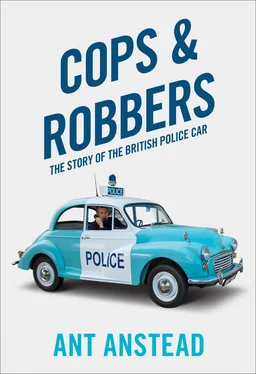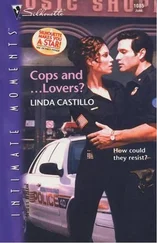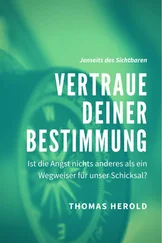1 ...7 8 9 11 12 13 ...25 Rather wonderfully, the first cars officially recorded as having been purchased by the police are two 1903 Wolseley 10hp wagonettes (remember this is RAC hp tax, not BHP), touring cars which were purchased for use by the Met’s Commissioner of Police and the Receiver (a strange title to modern ears, which makes you wonder if the police have been placed in receivership, but it is actually the title of the officer responsible for the financing of the force). They were numbered A209 and A210; these number plates were still being used until very recently – A210 was on the Home Secretary’s car in the 1970s, but I’ve not been able to find out where it is now. I’d not realised that the police loyalty to the Wolseley marque stretched back to what were really the first proper police cars in the UK. It gives me a rather warm glow to think of this.
1903 Wolseley, and why the police used this marque for so long
The last Wolseley-badged car, an ADO 71 ‘Wedge Princess’, was produced in 1975, but even today, mainly because of the proliferation of period crime dramas from Miss Marple to Buster , the Wolseley brand is indelibly associated with police cars. There is actually a reason of sorts, but you’d never guess it in a million years because it is to do with, wait for it, submarines …
In 1900 the ailing car side of the Wolseley machine tool business, which had grown from sheep-shearing machines, had been for sale for some months and had not found a buyer. The board had decided that making cars was too complex and, after some exploits that had not been entirely profitable, decided to concentrate on what they knew. That company still exists, successfully, today. The car side of the company was offered with their chief designer, one Herbert Austin, who would of course go on to found a motor company of his own. After almost 12 months of being touted around, and just when the directors were losing faith that it could be sold, the company was purchased by Vickers, even then a much larger concern with interests in defence engineering. The Wolseley car-making operation was moved to an existing Vickers factory, at Adderley Park, in Birmingham, in 1901, and new models were planned.
Vickers was then working on Britain’s top-secret new weapon, the Holland-class submarine, which was the first submarine built for the Royal Navy. This project was meant to be conducted in great secrecy initially, although unfortunately an Edinburgh newspaper leaked the details and left the Admiralty no alternative but to admit to its production. However, although they had been considering diversifying into car production for some time, in hindsight it’s fairly clear that Vickers’ main motivation for the purchase of Wolseley was to set up a discreet operation to work on developing and then building engines for the submarine engineering project; which they did. Doing this in a car factory in Birmingham, many miles away from the boat’s development centre in Barrow-in-Furness or Vickers’ facility in Sheffield, was also of some value when it came to keeping the details secret. Of course, this meant that Wolseley was effectively the car arm of major government defence contractor, Vickers, so what was more natural than ordering government cars from Wolseley? They were actually genuinely very good cars, with a reputation for reliability forged in long-distance trials and a customer list of the great and the good, including royalty both at home and abroad, plus celebrities of the time such as Sir Arthur Conan Doyle and politicians such as Cecil Rhodes. Wolseley continued to supply a variety of the War Office’s needs (the name of this department was changed to the Ministry of Defence in 1964), including re-engineering the SE5 fighter aircraft’s troublesome Hispano Suiza HS-8 liquid-cooled V-8 engine into the much more reliable higher-compression Wolseley Viper used in the SE5a.
Between 1902 and 1906 Wolseley supplied 27 vehicles to the War Office, including large heavy tractors and six 10hp cars, which were fitted with ‘special tonneau’ bodies for the Royal Engineers. The 10hp wagonette cars ordered by the Met featured a 2-cylinder horizontal engine (not opposed) of 2606cc, lying transversely across the car and allowing the driving of the rear axle by means of chains through a transmission of three gears, although later examples were of a 4-gear design. The engine only revved to 750rpm, which, proclaimed Austin, ensured a longer life than that of its rivals that revved faster. The cost was approximately £370, although that depends on specification since customers could, for instance, choose pneumatic or solid tyres. The first car delivered to the Met was number 284, a 10hp wagonette (meaning the seats in the rear were running along the length of the car rather than facing forward), delivered in May 1903, and the second, number 479, another 10hp wagonette, was delivered in June 1903.
A further car, number 480, yet another 10hp wagonette, was apparently also delivered in June 1903, but there is some doubt over whether this actually was supplied to the Metropolitan Police or to another government agency.
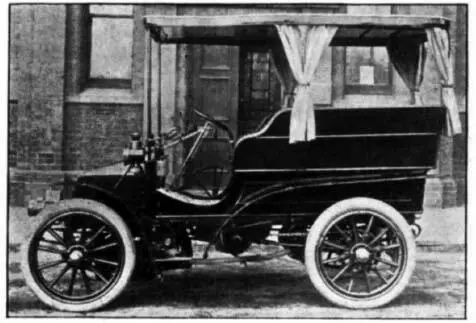
A 1903 Wolseley 10hp wagonette taken from a Wolseley company advert.
Herbert Austin left Wolseley to start his eponymous company in 1904, but the company carried on producing well-engineered cars and became one of the pioneers of mass-production OHC engines, with a design that was in some ways similar to that used in the submarine and aero engines … Unfortunately, Wolseley over-extended themselves in the early 1920s and went spectacularly bankrupt in late 1926. William Morris then bought the company, privately, and integrated it into his car business, which already contained Morris and MG and would, 12 years later, also include Riley. The distinctive illuminated radiator badge, or ‘Ghost Light’ as it was often called, was introduced in late 1932. The formation of BMC in 1952 was effectively a takeover of the Morris (or Nuffield) Group by Austin of Longbridge. Sadly, Herbert Austin had died in 1941 so he never saw his own firm merge with the one where he had built his initial reputation. However, that link and the police’s loyalty to the Wolseley brand, forged in the early days of motoring, continued, especially in the Met, until the Wolseley 6/110s went out of service in the early 1970s.
If you wish to learn more about Wolseley’s fascinating history, I heartily recommend Anders Clausager’s excellent book, Wolseley, A Very British Car , and the importance of his research in uncovering the story above must be noted.
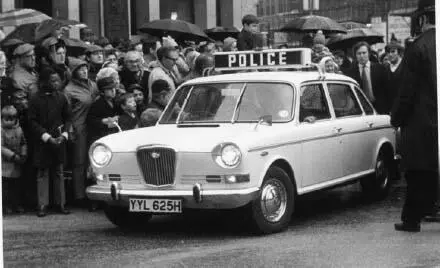
The last Wolseleys used as liveried police cars were 18/85 S Mk2 models used by the City of London Police in 1970, which were based on the BMC ‘Lancrab’. A very small number of the ‘Wedge Princess’ Wolseleys were used as government transport and security cars in London but, as far as we know, not as liveried police cars.
By 1906 the Met Police had six Siddeley vans, which were of a curious technical make-up to modern eyes and reflect the diversity of car design in this experimental era, being fitted with single-cylinder vertically mounted, 6hp 1173cc engines. To show that the car industry has not changed all that much, they were advertised as being ‘Essentially British’ despite the larger models being basically copied from Peugeots! The smaller ones used by the Met were actually re-badged Wolseleys because the Siddeley and Wolseley companies were intertwined at this time, which is no doubt why they were purchased.
Читать дальше
